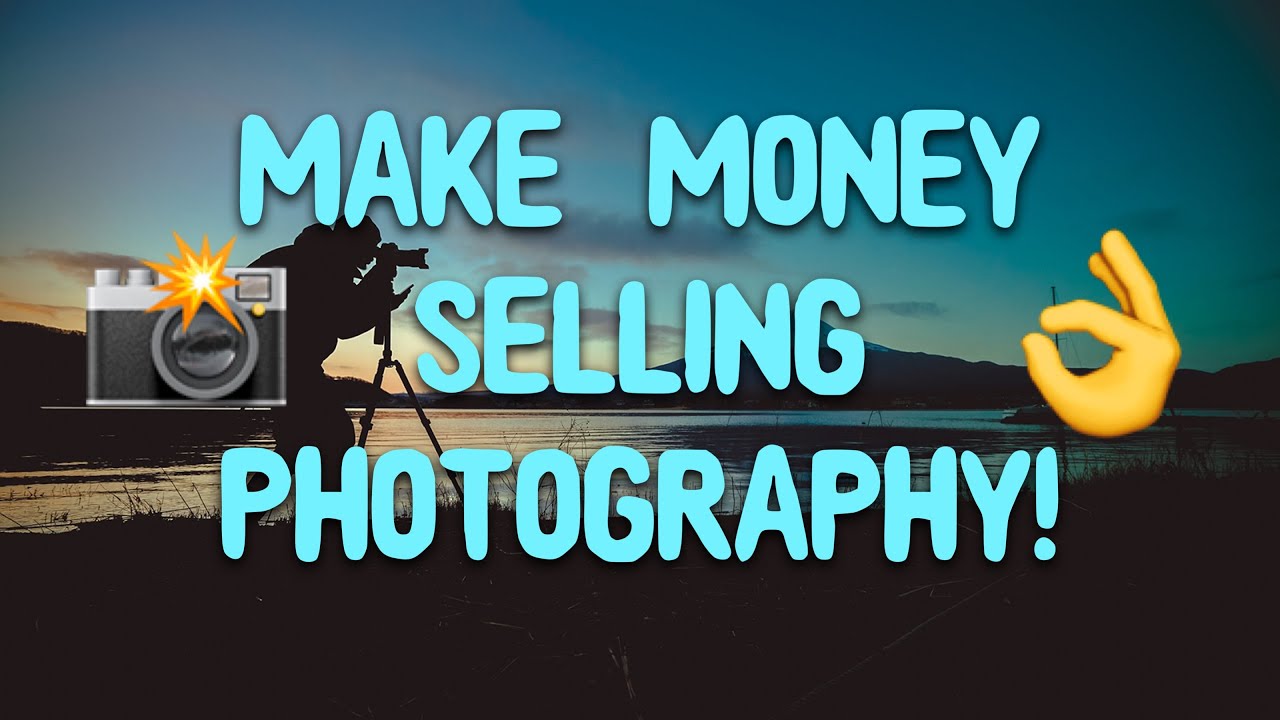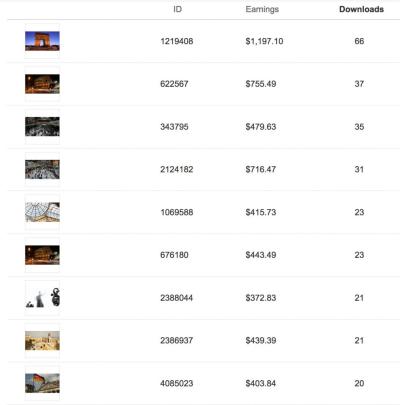Thinking about turning your photography or artwork into a steady income stream? Shutterstock is one of the biggest platforms out there for creative contributors to showcase and sell their work. Whether you’re a professional photographer, a graphic designer, or just someone with a passion for creating, Shutterstock offers a fantastic opportunity to reach millions of potential buyers worldwide. Not only does it provide a straightforward way to monetize your creativity, but it also gives you access to a global marketplace, regular royalties, and the chance to grow your portfolio over time. Let’s dive into what makes
Steps to Become a Shutterstock Contributor

Getting started as a Shutterstock contributor might seem a bit overwhelming at first, but it’s actually pretty simple once you understand the steps. Here’s a quick guide to help you on your journey:
- Sign Up and Create an Account: Head over to Shutterstock’s Contributor Portal and register with your email. Fill out your profile with accurate information—it helps build trust and credibility.
- Review the Content Guidelines: Before uploading, familiarize yourself with Shutterstock’s content requirements. They have specific standards for image quality, originality, and legal rights, so reading their guidelines will save you time later.
- Prepare Your Content: Ensure your photos, vectors, or videos are high-resolution, well-edited, and properly keyworded. Good quality and relevant keywords help your content get discovered.
- Upload Your Files: Use the Contributor Dashboard to upload your assets. You can upload multiple files at once, and the platform will process and review them.
- Submit for Review: Once uploaded, your content will undergo Shutterstock’s review process. They check for quality, originality, and compliance with guidelines. This can take a few days.
- Get Approved and Start Earning: Once approved, your work goes live on the site, and you’ll start earning royalties whenever someone licenses your content. Keep uploading new work regularly to build your portfolio and increase your earning potential.
That’s pretty much it! The process is straightforward, and Shutterstock provides helpful resources and tips along the way. With patience and consistency, you can turn your creative passion into a reliable source of income. Happy uploading!
Tips for Creating High-Quality Stock Photos and Videos

Creating stock photos and videos that stand out isn’t just about snapping a picture and uploading it. It’s about understanding what buyers are looking for and delivering content that’s both appealing and useful. Here are some tips to help you elevate your work and increase your chances of making sales.
Focus on Composition and Lighting: Good composition is the backbone of a great image. Use the rule of thirds, leading lines, and balanced framing to make your shots more engaging. Natural lighting often works best—shoot during the golden hour or in well-lit environments to avoid harsh shadows and dull colors.
Stay Trendy and Relevant: Keep an eye on current trends—whether it’s lifestyle themes, technology, or nature. Check out popular Shutterstock collections or search queries to see what buyers are searching for. Incorporate these themes into your work to increase the likelihood of your content being downloaded.
Use Proper Equipment: While you don’t need the most expensive gear, investing in a decent camera, good lenses, and a stabilizer can significantly improve your image quality. For videos, a quality microphone and tripod help produce professional-looking footage.
Pay Attention to Details: Small touches can make a huge difference. For photos, make sure backgrounds are clean and clutter-free unless the clutter adds to the story. For videos, ensure smooth motion and clear audio. Avoid over-editing—aim for natural, authentic results.
Diversify Your Portfolio: Upload a variety of subjects, styles, and themes. This not only broadens your chances of sales but also makes your portfolio more attractive to different buyers. Think about including images and videos of people, landscapes, business settings, and lifestyle scenes.
Follow Technical Guidelines: Each platform has technical requirements—resolution, aspect ratio, file format, etc. Ensure your files meet Shutterstock’s standards to avoid rejection. High-resolution images (at least 4MP) and 4K videos are preferred for premium placements.
Remember, creating high-quality content is an ongoing process. Keep practicing, learning from feedback, and refining your skills. Over time, your portfolio will grow stronger, and so will your earning potential as a Shutterstock contributor.
Understanding Shutterstock’s Submission and Review Process

Getting your content accepted on Shutterstock involves more than just uploading your best shots. Understanding their submission and review process can help you navigate it smoothly and improve your chances of success.
The Submission Process: Once you’ve prepared your images or videos, you’ll upload them through your contributor dashboard. During upload, you’ll need to provide relevant details—titles, descriptions, keywords, and categories. Think of these as clues that help buyers find your content.
Metadata is Key: Accurate and descriptive metadata can make your files more discoverable. Use relevant keywords that accurately describe the content, including the main subject, location, mood, and any other pertinent details. Avoid keyword stuffing—be honest and straightforward.
Initial Screening: After submission, your content enters the first review stage. Shutterstock’s review team checks for technical quality, relevance, and adherence to their guidelines. They look for issues like poor lighting, noise, pixelation, or inappropriate content.
Review Timeframe: The review process typically takes a few days but can sometimes extend to a week or more, especially during busy periods. Be patient—resubmitting low-quality files repeatedly won’t speed things up.
Rejection and Resubmission: If your content is rejected, don’t get discouraged. Shutterstock usually provides a reason or guideline for rejection. Review their standards, improve your files accordingly, and resubmit. Common reasons for rejection include technical flaws, lack of commercial appeal, or inappropriate content.
Acceptance and Licensing: Once approved, your files go live on the platform. Buyers can then license your content for their projects. You earn royalties based on the type of license purchased—standard or enhanced.
Staying Informed: Keep an eye on Shutterstock’s contributor resources and forums. They often update submission guidelines or share tips, which can help you stay aligned with their standards and maximize your chances of acceptance.
Understanding this process helps set realistic expectations and encourages you to produce consistent, high-quality work. Remember, quality always beats quantity—each accepted submission is a step closer to building a successful portfolio and earning reliable income as a Shutterstock contributor.
Strategies to Increase Your Earnings on Shutterstock
So, you’re already uploading some great images and videos to Shutterstock, but you’re wondering how to boost those earnings even further. The good news is, with a few smart strategies, you can maximize your earning potential and turn your creative passion into a more lucrative side hustle—or even a full-time gig!
Here are some tried-and-true strategies to help you increase your Shutterstock income:
Focus on Trending and High-Demand Topics
Keep an eye on current trends and popular themes. Think about what buyers are searching for—business, technology, health, lifestyle, or seasonal themes. Shutterstock’s search data and trending collections are great resources to identify hot topics. Creating content around these areas increases the chances of your work being downloaded.
Optimize Your Keywords and Titles
Don’t underestimate the power of good keywording. Use descriptive, relevant, and varied keywords to make your images more discoverable. Think about what a buyer might search for—be specific but also include broader terms. Clear and keyword-rich titles also help improve visibility in search results.
Upload Consistently and Maintain Quality
Consistency is key. Regular uploads keep your portfolio fresh and signal activity to Shutterstock’s algorithms. But remember, quality trumps quantity. Focus on creating high-resolution, well-composed, and technically sound images. Well-edited videos with good lighting and sound also perform better.
Diversify Your Portfolio
Don’t put all your eggs in one basket. Explore different styles, subjects, and formats. If you specialize in landscape photos, consider adding lifestyle or abstract images. The wider your range, the more opportunities for buyers to find your work.
Engage with the Shutterstock Community and Resources
Join forums, webinars, or social media groups dedicated to stock contributors. Sharing tips, feedback, and experiences can help you improve your craft and stay motivated. Shutterstock also offers tutorials and tips—take advantage of these to refine your skills and stay updated on best practices.
Common Mistakes to Avoid as a Shutterstock Contributor
While it’s exciting to start earning on Shutterstock, new contributors often make some common mistakes that can slow down their progress or even hurt their chances of success. Being aware of these pitfalls can save you time and frustration—and help you build a stronger, more profitable portfolio.
1. Ignoring Quality and Technical Standards
Uploading images or videos that are blurry, poorly lit, or poorly composed is a big no-no. Shutterstock has strict quality standards, so always review your work before uploading. Use high-resolution files, ensure proper exposure, and avoid heavy noise or compression artifacts.
2. Overusing Irrelevant or Misleading Keywords
Stuffing your keywords with irrelevant terms or using misleading tags might get your content rejected or result in poor visibility. Be honest and precise with your keywords. Think about what a buyer would realistically search for.
3. Not Staying Up-to-Date with Trends and Market Needs
Sticking with outdated themes or niche topics that no longer interest buyers can limit your earnings. Regularly research current trends and update your portfolio accordingly.
4. Uploading Too Frequently Without Maintaining Quality
Uploading a large volume of low-quality content in hopes of more downloads can backfire. Focus on quality over quantity. A smaller, well-curated portfolio often performs better than a large, inconsistent one.
5. Failing to Read and Follow Shutterstock’s Contributor Guidelines
Each platform has its rules, and ignoring them can lead to rejections or account issues. Familiarize yourself with Shutterstock’s submission guidelines, content policies, and technical requirements. This ensures your uploads meet standards and get approved faster.
6. Not Promoting Your Work
Many contributors think uploading is enough. While Shutterstock handles the distribution, you can still promote your portfolio on social media or personal websites. Building a following or driving traffic to your portfolio can lead to more downloads and higher earnings.
In summary, increasing your earnings on Shutterstock involves a mix of strategic content creation, smart keywording, staying current with trends, and avoiding common pitfalls. With patience and persistence, you’ll see your portfolio grow and your income rise. Happy contributing!
Additional Ways to Boost Your Income from Stock Content
So, you’ve got your portfolio up and running on Shutterstock—great! But if you’re serious about maximizing your earnings, there are some extra strategies you can use to give your income a real boost. Let’s dive into a few ideas that can help you get more out of your stock content.
1. Diversify Your Content Types
Don’t just stick to one type of content. If you’re primarily uploading photos, consider adding illustrations, vectors, or videos. Shutterstock values variety, and offering different formats can open up more opportunities for sales. For instance, videos are in high demand for marketing and social media, and they often fetch higher prices.
2. Keep Up with Trends
Stay in the loop with what’s trending. Check out trending keywords, popular themes, and current events. Create content that taps into these trends—think seasonal themes, emerging industries, or viral topics. Using trending keywords in your descriptions and tags can also help your content appear in more searches.
3. Offer Exclusive Content
Consider participating in Shutterstock’s exclusive contributor program. While it might mean giving up some licensing options, exclusive content can earn you higher royalty rates. Plus, exclusive content can stand out more in the marketplace, attracting buyers looking for unique, one-of-a-kind assets.
4. Optimize Your Metadata
Think of your titles, descriptions, and tags as your content’s GPS. Use relevant keywords naturally, be descriptive, and avoid stuffing. Well-optimized metadata helps your content get discovered by the right buyers. Tools like Google Keyword Planner or Shutterstock’s own search trends can guide you in choosing the best keywords.
5. Promote Your Portfolio
Don’t rely solely on Shutterstock’s search traffic. Share your work on social media, create a personal website or portfolio, or participate in online communities. The more eyes on your work, the higher the chances of sales. Sometimes, direct promotion can lead to custom projects or collaborations that aren’t available through stock licensing.
6. Offer Custom Content or Bundles
Some contributors offer customized content or create bundles of related assets. For example, a set of icons, a series of landscape photos, or themed collections can appeal to buyers looking for ready-made packages. This can also increase your average sale per download.
Remember, boosting your income isn’t about working harder—it’s about working smarter. Keep experimenting, stay updated on industry trends, and continuously improve your portfolio and marketing efforts. Before you know it, those extra earnings will start stacking up!
Conclusion and Final Tips for Success as a Shutterstock Contributor
Becoming a successful Shutterstock contributor is a journey that combines creativity, strategy, and persistence. While it might seem straightforward at first—upload good content, get sales—the real magic happens when you actively optimize and grow your portfolio over time. So, let’s wrap up with some final tips to help you thrive in this competitive marketplace.
Stay Consistent and Keep Uploading
Regularly adding new content keeps your portfolio fresh and increases your chances of being found. Set a manageable upload schedule—whether that’s weekly or monthly—and stick to it. The more quality assets you have, the better your chances of earning consistent royalties.
Prioritize Quality Over Quantity
While quantity matters, quality is king. High-resolution images, clear compositions, and well-edited videos make your work stand out. Remember, buyers are often willing to pay more for premium content that looks professional and polished.
Learn from Your Analytics
Use Shutterstock’s contributor dashboard to see which content performs best. Pay attention to your top-performing assets and analyze what makes them popular. Use these insights to guide your future creations—whether that’s subject matter, style, or format.
Engage with the Shutterstock Community
Join forums, social media groups, or webinars for contributors. Sharing experiences, tips, and feedback can be invaluable. Plus, building connections might open doors to collaborations or exclusive opportunities.
Be Patient and Persistent
Success doesn’t happen overnight. It takes time to build a strong portfolio and gain visibility. Keep uploading, refining your content, and learning from your results. Every contributor faces setbacks, but perseverance is key to long-term success.
In the end, becoming a profitable Shutterstock contributor is about passion, patience, and continuous improvement. Stay creative, stay committed, and enjoy the process of turning your images, videos, or illustrations into a steady income stream. Happy contributing!


